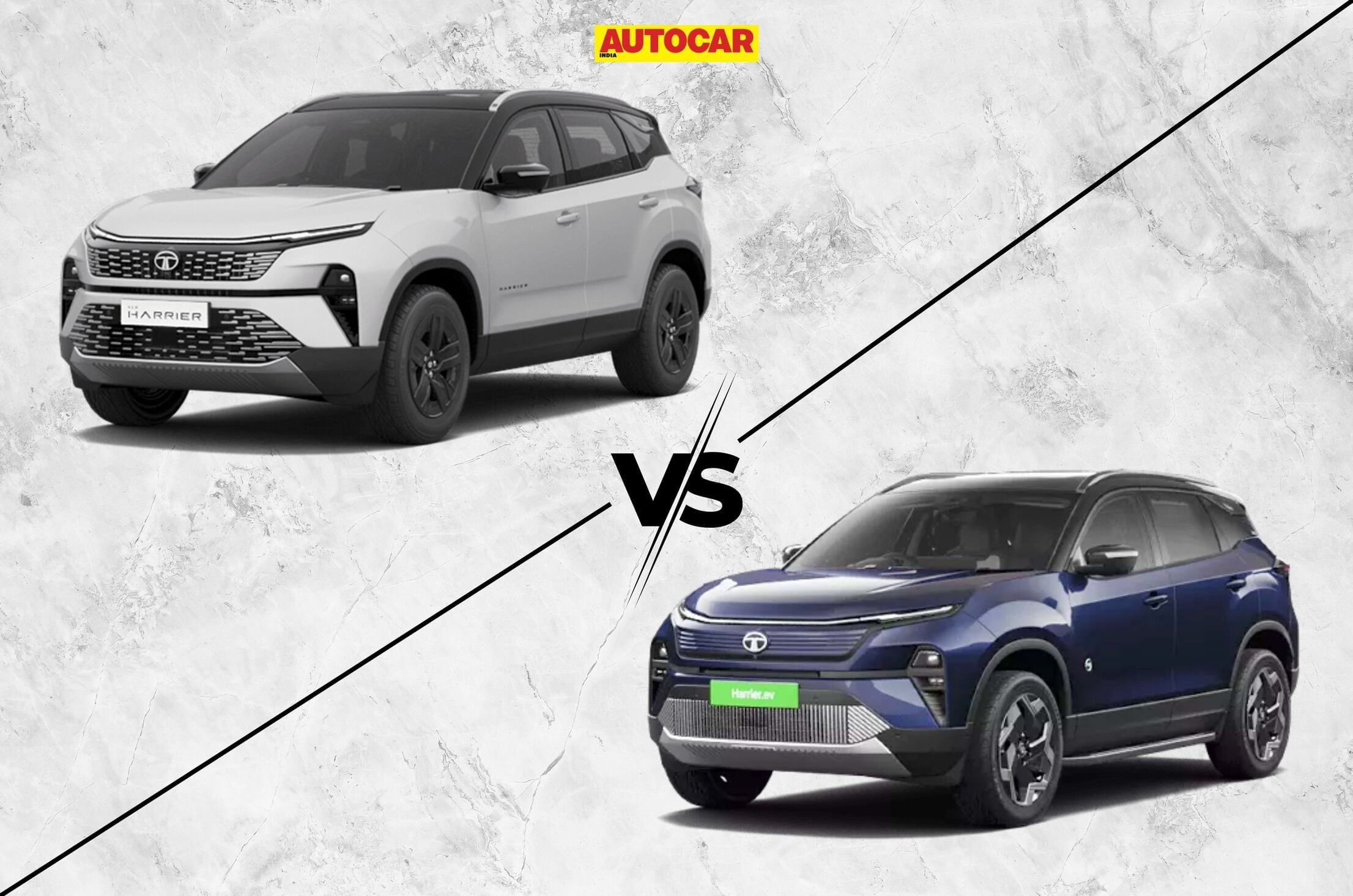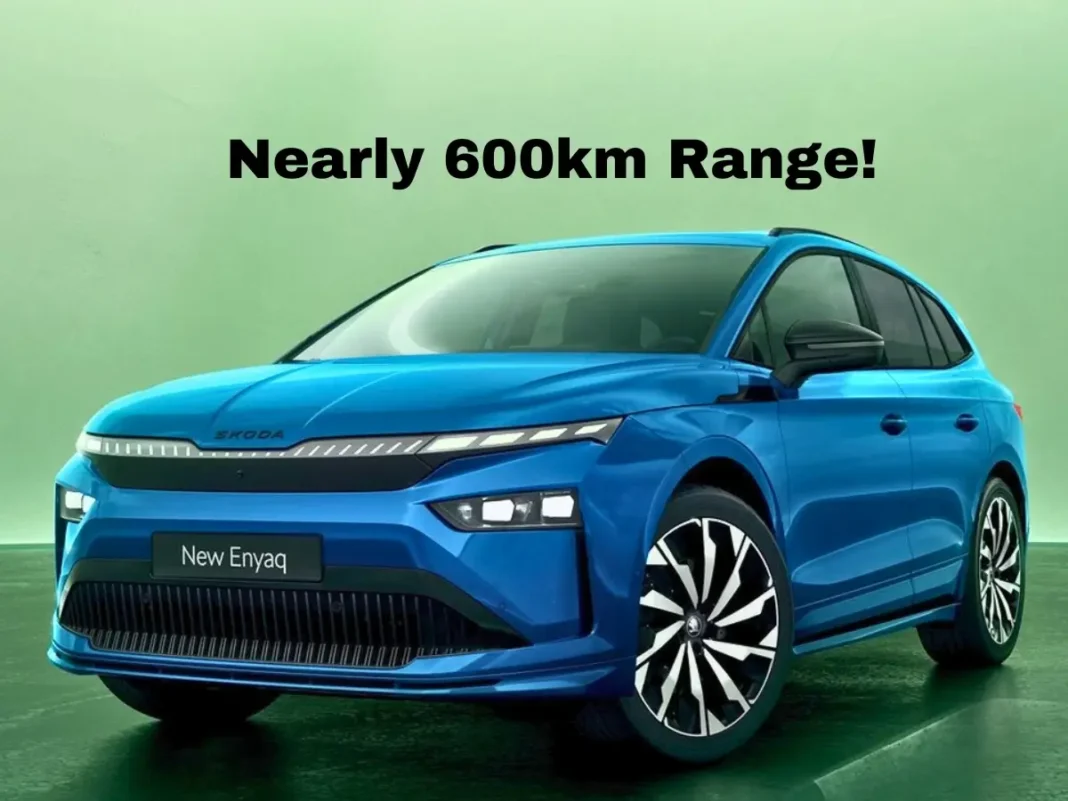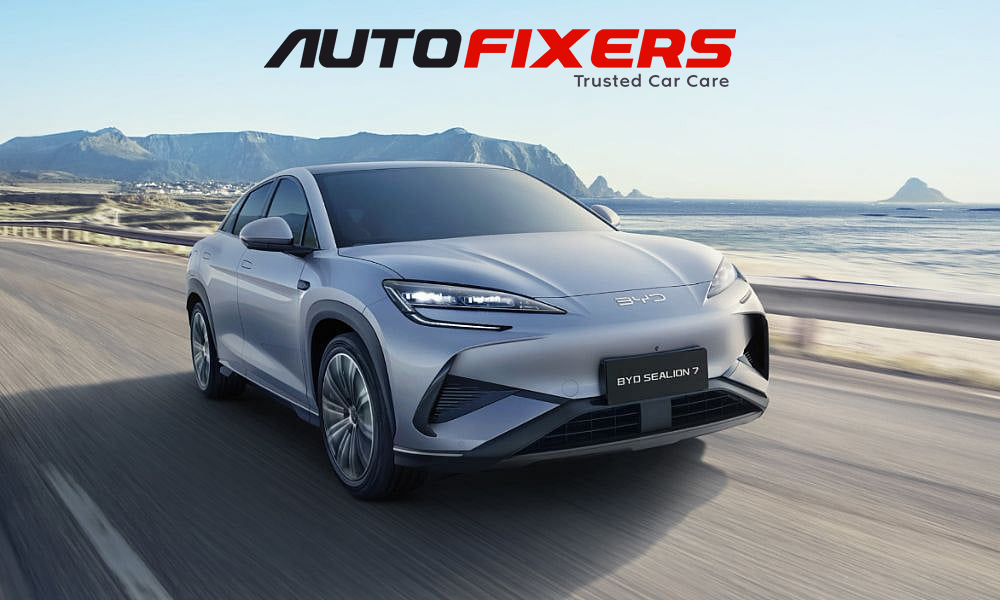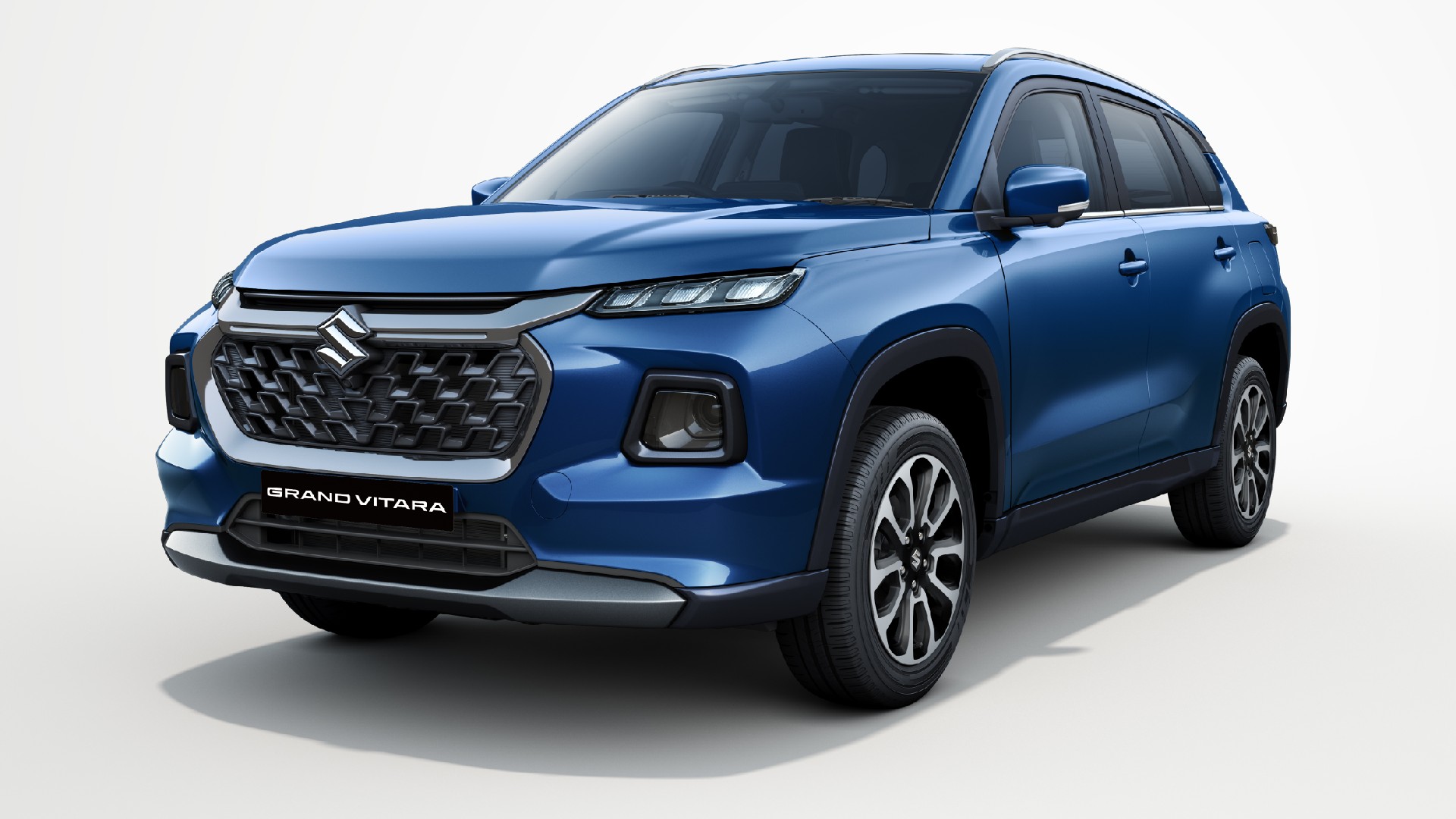
Tata Motors has recently introduced the Harrier EV, marking its most powerful and feature-rich electric vehicle to date. While the exterior of the Harrier EV closely resembles that of the traditional Harrier diesel, these two SUVs have significant differences beneath the surface and in their features. We have analyzed the specifications of both the Harrier EV and the Harrier diesel to highlight how Tata’s latest electric model stands apart.
Tata Harrier EV vs Harrier diesel exterior design
Harrier EV features subtle design enhancements
Externally, the distinctions between the Harrier EV and the Harrier diesel are slight. The Harrier EV incorporates unique design features, including a closed grille, updated front bumper, silver skid plates, EV branding, and aerodynamic alloy wheels. However, aside from these alterations, it visually aligns closely with the Harrier diesel. Key design traits from the Harrier diesel, such as its robust and upright stance, connected LED daytime running lights, vertical headlights, sharp rear light bar, and roof spoiler are retained in the Harrier EV.
Harrier diesel provides a wider array of color options
In terms of color choices, the two SUVs differ greatly. The Harrier diesel is available in eight vibrant hues: Ash Grey, Coral Red, Lunar White, Matte Stealth Black, Oberon Black, Pebble Grey, Seaweed Green, and Sunlit Yellow. In contrast, the Harrier EV offers a limited palette of five options, predominantly featuring unique finishes: Empowered Oxide, Nainital Nocturne, Matte Stealth Black, Pristine White, and Pure Grey.
Notably, the Harrier EV is slightly larger, measuring 2mm longer and 22mm taller than the diesel variant, with both having the same wheelbase of 2,741mm.
Tata Harrier EV vs Harrier diesel interior
Similar cabin configurations
The interior of the Harrier EV mirrors that of the Harrier diesel quite closely. They both feature similar dashboard layouts, including the four-spoke steering wheel with an illuminated Tata logo, a 10.25-inch digital driver display, a floating infotainment touchscreen, and a touch-sensitive HVAC control panel. However, the Harrier EV boasts a larger 14.53-inch touchscreen display with Samsung Neo QLED technology, which Tata claims is a first in the world.
Digital rearview mirror with dashcam functionality in Harrier EV
Furthermore, the Harrier EV enhances the driving experience with a fully digital inside rearview mirror, contrasting with the conventional mirror found in the Harrier diesel. This digital mirror acts as a screen providing unobstructed views both front and rear, complete with an integrated dashcam for constant recording.
Regarding cargo space, the Harrier EV provides 502 liters with the second row of seats up (plus an additional front trunk), while the Harrier diesel offers a 445-liter boot. It’s important to note that the Harrier diesel’s boot capacity is measured up to the parcel shelf, while that of the Harrier EV stretches up to the roof.
Tata Harrier EV vs Harrier diesel features and safety
Harrier EV incorporates cutting-edge electrical architecture
The Harrier EV features a range of advanced technologies due to its innovative electrical architecture, referred to as TiDAL (Tata Intelligent Digital Architecture Layer). This system supports functionalities such as over-the-air updates, an advanced infotainment system, a 10-speaker JBL sound experience, voice recognition, and a comprehensive 540-degree surround view camera system, alongside Level 2 ADAS features specifically optimized for the diverse driving conditions in India.
Advanced parking and autonomous features
On the safety side, the Harrier EV introduces Off-road Assist, a low-speed cruise control feature, allowing drivers to maintain a steady pace as they navigate off-road conditions. Additionally, it offers automated parking capabilities and a summon function that aids the vehicle in maneuvering out of tight spaces.
In-car payment feature eliminates the need for smartphones
The Harrier EV is also equipped with DrivePay, a unique UPI-based payment system, allowing in-car transactions for costs such as FASTag recharges and EV charging without the necessity for a smartphone. The vehicle supports vehicle-to-load (V2L) and vehicle-to-vehicle (V2V) features, enhancing its electric capability.
Many amenities are shared between the Harrier EV and Harrier diesel, including a powered tailgate, panoramic sunroof, ventilated front seats (with a power adjustment for the driver), dual-zone climate control, ambient illumination, cabin air purifier, wireless charging, fast-charging USB Type-C ports, rear sunshades, and a sliding armrest with cooling storage. To improve comfort for rear occupants, the Harrier EV includes a powered Boss mode, enabling automatic adjustment of the front passenger seat.
Tata Harrier EV vs Harrier diesel powertrain options
Harrier EV developed on a modified version of the diesel platform
The Harrier EV and the Harrier diesel showcase distinct differences in powertrains. The Harrier EV is a fully electric vehicle, derived from a significantly modified version of the Harrier diesel’s Omega platform, known as Acti.ev. It offers two LFP battery variants: 65kWh and 75kWh. The 65kWh variant is paired with a single rear motor delivering 238hp, while the 75kWh variant includes an additional 158hp motor at the front, achieving a total of 313hp and 504Nm torque across all four wheels. The Harrier EV also features four levels of regenerative braking and a dedicated Drift mode.
All-Wheel Drive and off-road capabilities in Harrier EV
With the 75kWh option, the Harrier EV introduces all-wheel drive, a feature absent in Tata’s offerings for over five years, contrasting with the front-wheel drive configuration of the Harrier diesel. This addition enhances the Harrier EV’s off-road potential, incorporating a new multi-link rear suspension with frequency-dependent dampers, along with six terrain modes (compared to three for the Harrier diesel): Normal, Snow/Grass, Mud-Ruts, Sand, Rock Crawl, and Custom. A unique Transparent mode allows a live view of the ground beneath the SUV to assist with off-road driving.
Harrier diesel’s performance metrics
The conventional Harrier is equipped with a 2.0-litre turbocharged diesel engine generating 170hp and 350Nm, available with either a 6-speed manual or a 6-speed automatic transmission. The Harrier diesel can go from 0-100kph in approximately 11-12 seconds. In contrast, the Harrier EV’s 75kWh AWD variant accelerates to 100kph from a standstill in just 6.3 seconds, aided by its Boost mode—one of four selectable driving modes (Eco, City, Sport, Boost) for the AWD versions, with RWD variants offering Eco, City, and Sport modes similar to the Harrier diesel.
The Harrier EV achieves a MIDC-certified range of 622km in the AWD 75kWh model, while the RWD 75kWh variant can cover up to 627km on a full charge. Tata has not yet announced the range specific to the 65kWh version. Regarding charging capabilities, the Harrier EV can fully recharge from 10-100 percent in about 10.7 hours with a 7.2kW AC charger, while utilizing a 120kW DC fast charger can facilitate a 20-80 percent charge in just 25 minutes. Tata asserts that a 15-minute fast charge can provide approximately 250km of range for the Harrier EV.
Tata Harrier EV vs Harrier diesel price and variants
Extensive trim offerings for the Harrier diesel
The Harrier diesel is available in a comprehensive range of trims, including: Smart, Smart(O), Pure, Pure(O), Pure+, Pure+ S, Pure+ S Dark Edition, Adventure, Adventure+, Adventure+ Dark Edition, Adventure+ A, Fearless, Fearless Dark Edition, Fearless+, Fearless+ Dark Edition, and Fearless+ Stealth Edition. Its pricing starts at Rs 15 lakh and can go up to Rs 26.50 lakh.
Limited variant options for the Harrier EV
In contrast, the Harrier EV presents a simplified model lineup, initially offering just three variants: Adventure, Fearless, and Empowered. While Tata has revealed the price for the entry-level Adventure trim of the Harrier EV, set at Rs 21.49 lakh (introductory), the top-tier Empowered variant is anticipated to exceed the pricing of the Harrier diesel. Furthermore, Tata is providing a lifetime battery warranty for the electric SUV.
All prices ex-showroom, India.















